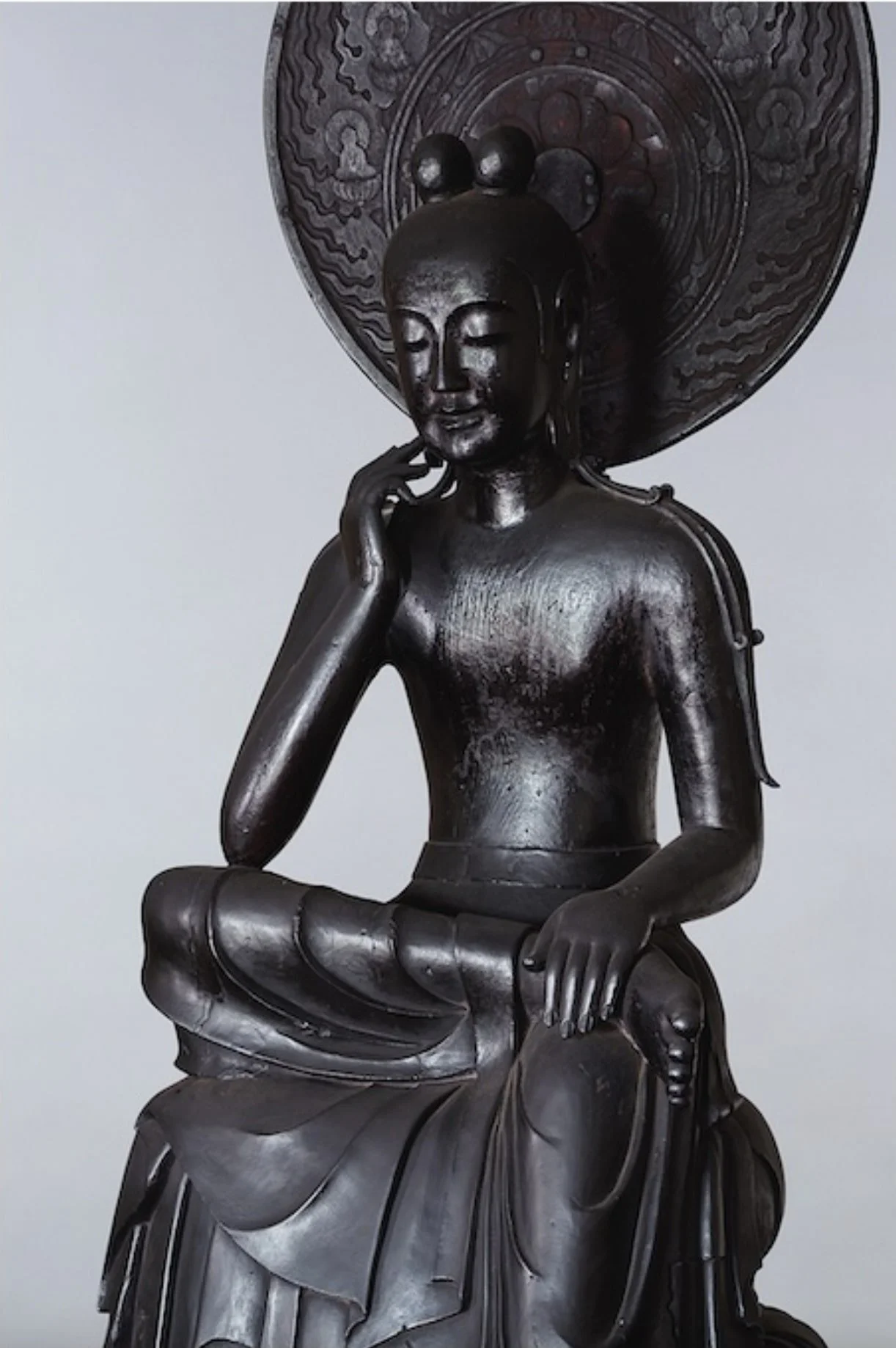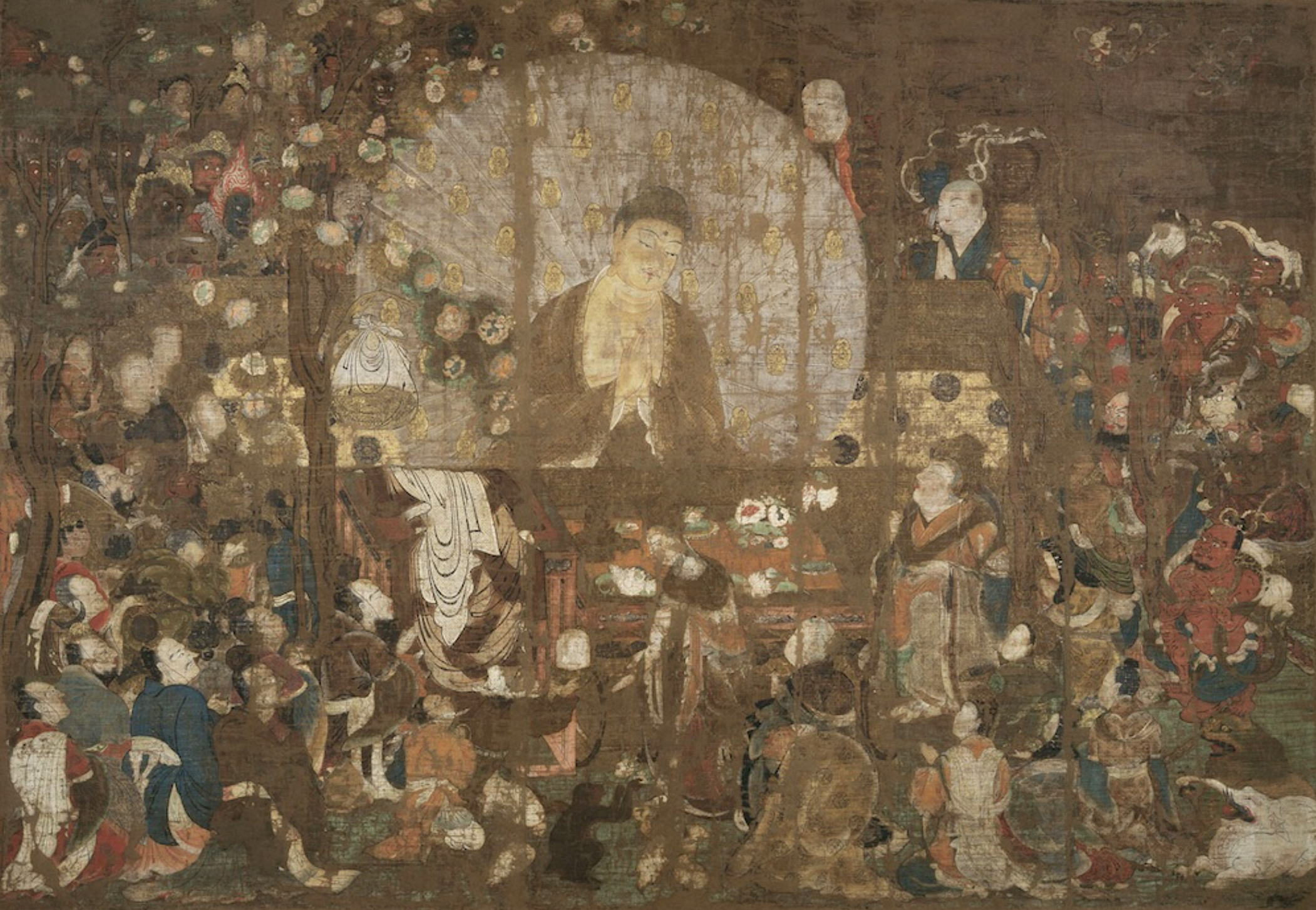Oh! KOKUHO: A Rare Gathering of Japan’s National Treasures
The Nara National Museum celebrates its 130th anniversary with a rare and reverent gathering of National Treasures — sacred objects of devotion drawn from across Japan.
Sense of Wander: ★★★★★
In celebration of the Nara National Museum’s 130th anniversary, and coinciding with Expo 2025 in Osaka, the museum presents the exhibition Oh! KOKUHŌ: Resplendent Treasures of Devotion.
NARA, Japan — As crowds gather in Osaka for World Expo 2025, just an hour away by Kintetsu rail lies another marvel: a once-in-a-lifetime exhibition at the Nara National Museum.
Titled Oh! KOKUHŌ: Resplendent Treasures of Devotion, this is the museum’s first full-scale exhibition dedicated entirely to National Treasures. In Japanese, kokuhō refers to items of profound cultural and historical values representing Japan’s collective memory and heritage. The exhibition features 140 Buddhist and Shinto treasures, including 110 designated National Natures and a handful of rare objects dubbed “super treasures,” preserved through the devotion of individuals. Perhaps it is this very sense of devotion that draws visitors here — even on a rainy morning, many (myself included) wait nearly an hour just to step inside.
The exhibition opens with artefacts from the Great Temples of Nanto, Nara’s historical heart. The museum' itself has long been entwined with the guardianship of these treasures. During the Meiji Restoration (1868–1889), Buddhist sculptures and sacred relics faced destruction or dispersal. In response, the Nara National Museum emerged as a protector of this endangered heritage — a mission that continues to shape its identity today.
In the first gallery of Oh! KOKUHŌ, visitors move in quiet reverence around the standing statue of Kudara Kannon, taking in the time-honoured craftsmanship of 7th-century Buddhist art and the grace radiating from the deity. Image courtesy of the Nara National Museum.
At the centre of the first gallery stands the Kudara Kannon, a 7th-century statue of Kannon, or Avalokiteshvara — the Bodhisattva of Compassion. With its elongated form and serene gaze, the figure appears to float somewhere between presence and dream, as if straddling the boundary between this world and another.
In its left hand, it holds a vase; the right is raised in varada mudra, the gesture of granting wishes. Crafted from lacquered wood so masterfully that it’s often mistaken for aged bronze at first glance. Even across centuries, it radiates a presence that feels deeply intimate. Standing before this peaceful presence, I can hardly believe I’ve been given this rare chance to encounter what is considered the oldest Buddhist sculpture in Japan.
A myriad of votive offerings, known as chindangu, were buried in the foundation of Todaiji Temple in Nara. Image courtesy of the Tokyo National Museum.
Objects on view here span from the Asuka period (538–710) to the Kamakura period (1185–1333). Amongst statues, scrolls, and temple documents, one display steals my attention — a case of votive offerings once buried beneath the foundations of Todaiji Temple. These chindangu include six-lobed bronze mirrors, metal bowls, amber and agate beads, crystal spheres, and gold ornaments. Visitors circle the case slowly, peering in as if glimpsing the soul of a forgotten ritual.
The museum’s roots trace back to Nara Hakurankai, a major exhibition held at Todaiji Temple in 1875 that brought together treasures from the Shosoin Repository and beyond. Its overwhelming success inspired the founding of the Imperial Museums in Tokyo and Nara — the latter becoming today’s Nara National Museum.
A vivid portrayal of the 10th-century monk Kuya captures the devotion of an eccentric figure who chanted the Nembutsu as he wandered the streets — spreading its message and, through it, attained Buddhahood. Image courtesy of Fujita Museum in Osaka.
That history is echoed in the portrait sculpture of Kuya, a 10th-century monk known for his unconventional path. Unlike others who stayed cloistered, Kuya wandered the streets, chanting Namu Amida Butsu — “I take refuge in Amitabha Buddha” — and encouraging others to do the same.
Here, Kuya’s expressionless face resembles a Noh mask. He holds a staff used to strike the gong that hangs from his neck. The statue stands just 96.7 centimetres tall, but look closely and you’ll see six tiny Buddhas emerging from his mouth, poised on swirling clouds — a visual embodiment of how devotion itself can lead to awakening.
As a centre for Buddhist art, the Nara National Museum has long studied the chronological evolution of Buddhist sculpture and painting in Japan, along with the temples that housed them. That scholarship is visible here in every chosen exhibit.
Shaka Nyorai is seen emerging from the golden coffin, moment that stirs awe in all who witness it. Image courtesy of the Nara National Museum.
The 12th-century depiction of Kokūzō Bosatsu speaks of mastery — its delicate kirikane patterns offer a window into the microscopic intricacy that defined Buddhist art of the time. Image courtesy of the Tokyo National Museum.
Among the paintings, the one that stands out to me is Kokūzō Bosatsu (Akasagarbha), one of the eight great bodhisattvas, whose name means “Boundless Space Treasury.” The deity is seated in deep meditation atop a lotus pedestal, cradling the “Three Jewels” — the Buddha, the Dharma, and the Sangha. Though painted in the 12th century, its colours remain vibrant. I’m especially drawn to the gold patterning on the bodhisattva’s robes — created using the kirikane technique. The motif of overlapping circles, known as shippō or “seven treasures,” gives the figure a tactile quality, further enhanced by silver dots shimmering inside each ring.
Another painting from the Heian period (794-1185) depicts Shaka Nyorai (the Japanese name for Shakyamuni) rising from a golden coffin, hands pressed together, offering one final sermon to his mother, Queen Maya. Known in China and Japan through the Mahayama Sutra — a text absent from Sanskrit and Tibetan canons — this luminous scene captures the sacred moment of Nirvana.
A revelation that is both serene and profound, this moment — the highest state of enlightenment in Buddhist belief — continues to inspire awe. Seen together, these two paintings affirm the widely held view that the Heian period produced some of the most exquisite Buddhist art in Japan’s history.
Dating to the 8th century, Kichijoten is depicted in richly adorned attire, reflecting the aesthetic influences of Tang China. Image courtesy of the Yakushiji Temple in Nara.
But among the scrolls, one of the rarest is an 8th-century painting of Kichijoten, the goddess of beauty and prosperity. Derived from the Hindu goddess Lakshmi, Kichijoten appears with crescent eyebrows, soft cheeks, and flowing robes that evoke the elegance of Tang China. She is said to have been modeled on Empress Komyo (729–749). I remember seeing a reproduction on a postcard at Yakushiji Temple during a previous visit. The original is rarely shown — and once again, I’ve missed it, because it was only on view for a limited time.
The scripture of the Golden Light Sutra — also known as the Kokubunji Sutra — is written in gold ink on purple-dyed paper. Image courtesy of the Nara National Museum.
A highlight of the Oh! KOKUHŌ exhibition is this handscroll of the Lotus Sutra — a rare Buddhist scripture. Image courtesy of the Kyoto National Museum.
The exhibition also highlights the sacred art of sutra copying. In the Nara period (710–794), entire scriptures were hand-copied as offerings for the emperor or the state, believed to bring spiritual merit. During the Heian period, these copies became increasingly ornate. One striking example is the Golden Light Sutra, also called the Kokubunji Sutra, written in gold ink on purple-dyed paper. The refined calligraphy shimmers with reverence — its luster said to be polished using boar tusks.
Another remarkable sutra from the Heian period treats each character as a Buddha, placing it atop a silver-outlined lotus pedestal. Pigments in gold, silver, orange, blue, and green fill the lotus petals with quiet radiance. It is a visual manifestation of the Lotus Sutra’s core teaching: that all beings possess innate Buddha nature. The handscroll belongs to a nine-volume set from Ryushinji Temple in Fukushima Prefecture.
This 4th-century Seven-Branched Sword is one of the more curious treasures on view at the Oh! KOKUHŌ exhibition at the Nara National Museum. Image courtesy of Isonokami Jingu Shrine in Nara.
Before Buddhism, Japan’s spiritual life was rooted in Shinto — the reverence for nature and ancestral spirits known as kami. Nara, as an ancient capital, played a key role in shaping this tradition. The exhibition includes sacred treasures from Shinto shrines across Japan, revealing how Shinto and Buddhism evolved side by side, weaving a uniquely Japanese tapestry of belief.
Among them is the Seven-Branched Sword, dated to the 4th century and housed for more than 1,600 years at Isonokami Jingu Shrine in Nara. Forged in iron and stretching nearly 75 centimetres long, this Kofun-period artefact resembles an antler with its branching spikes. It is believed to have been a diplomatic gift from a Baekje king on the Korean Peninsula to a Yamato ruler in Japan.
What fascinates scholars and visitors alike are the 62 Chinese characters inlaid in gold on the blade — a valuable insight to the cultural and political ties between ancient Korea and Japan. Even for those who are familiar with Chinese, the script is difficult to decipher — some characters still shimmer with mystery.
Oh! KOKUHŌ draws to a close with Seated Bosatsu in Pensive Pose — inviting viewers to contemplate on the relevance of these National Treasures in today’s world. Image courtesy of the Nara National Museum.
The exhibition draws to a close with a rare presence: Seated Bosatsu in Pensive Pose. Dated to the 7th century and carved from camphor wood, the bodhisattva sits with one leg crossed, fingers gently touching its cheek, eyes closed in deep thought. The statue is said to be connected to Prince Shotoku (572–621), venerated as a manifestation of bodhisattva compassion.
Though modest in size, its gentle form — youthful body, cascading hair, and serene expression — exudes a sacred stillness. The flame-shaped halo behind it seems to echo the myriad of thoughts that draw the deity into contemplation. From certain angles, the bodhisattva’s smile becomes more visible — subtle, tender, almost imperceptible — yet unforgettable.
Originally from the Chuguji Temple, the statue has not been shown publicly in 25 years. As philosopher Watsuji Tetsuro once observed, it possesses a “universal beauty that transcends religion” — a beauty not easily contained by the word beautiful itself.
Perhaps this is what draws me again and again to ancient artefacts: the fleeting yet eternal encounter with a beauty that transcends time and space — a divine presence that continues to offer light and solace, even 1,300 years after its creation.
Reference:
Asakaze, H., Tomoji, I., Mita Kakuyuki, Motoko, M., & Ryusuke, Y. (Eds.). (2025). Oh! KOKUHŌ: Resplendent Treasures of Devotion and Heritage (H. Pedersen, Trans.). Nara National Museum.
Oh! KOKUHŌ: Resplendent Treasures of Devotion and Heritage was held at the Nara National Museum and ran until June 15, 2025.











